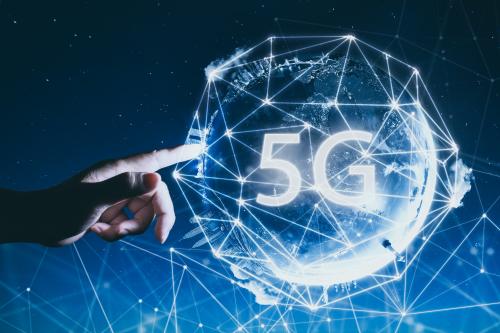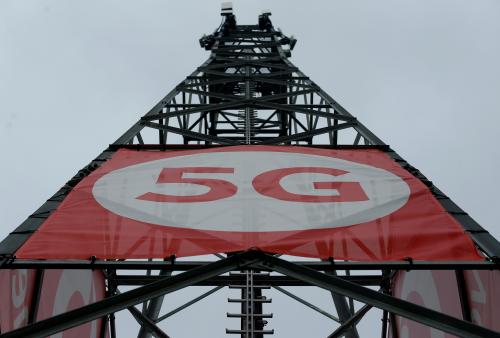The proposed merger between Sprint and T-Mobile once again focuses the nation’s attention on next generation 5G wireless service. Burdened with the fact that the current vibrant competition among four wireless companies has benefited consumers greatly (decreasing prices by 13 percent in the last year alone), the companies assert that their merger will accelerate the deployment of 5G.
The “China is winning on 5G” argument of Sprint and T-Mobile is creative, and probably the only rationale they could concoct after the government twice before rejected their proposal to reduce national wireless competition from four providers to three. Looking at what has changed since those knock-downs, fifth generation wireless is probably the only new argument to grab ahold of.
However, the problem with the 5G rationale is that both companies have previously promised to be competitive in 5G. Before the transaction was announced, T-Mobile had promised to roll out 5G in 30 American cities this year. In comparison, AT&T has announced 12 cities and Verizon 11 cities. Sprint promised their 5G rollout would begin early next year.
So, just what is 5G? It is a new technology standard designed to increase the speed of data moving over wireless networks. T-Mobile announced its initial 5G deployments would be 25-50 percent faster than the current 4G-LTE (which caps out at about 400 megabits per second) and would get faster over time. In a February presentation to an industry gathering, T-Mobile demonstrated speeds up to 12 gigabits per second and promised, “5G is something we’re building now.”
Playing the China card with its national security implications may, however, backfire on Sprint and T-Mobile. The Trump administration has already weighed in on the national security issues of 5G when it blocked Broadcom’s acquisition of Qualcomm. The administration has also explored solutions for “winning on 5G,” other than making consumers losers by taking away competition.
Earlier this year, a study leaked from the National Security Council (NSC) argued that for national security reasons the government should build a cyber-secure national high-speed 5G wireless network–a “network of networks” that would be shared by all the wireless companies. Government network ownership, appropriately, went over like a lead balloon.
Lost in the furor over that proposal, however, was the validity of conserving capital and building 5G faster to more Americans by using a single industry-owned shared network. Rather than making redundant expenditures to duplicate each other’s network, the companies could build their own “network of networks,” or at least a common backbone for basic 5G applications.
Sharing network infrastructure in order to better allocate capital and thus expand service to more people is not a radical idea. The wireless industry has done it before.
In the mid-1990s, as new competitors were breaking into what was then a duopoly, they often shared the cost of building a common network. Their consumers never knew this was happening, and the companies engaged in full-throated competition with each other even while using the same infrastructure. It was a smart business decision then, and it would be equally smart today to deal with the high investment costs associated with 5G – and to do so without diminishing competition!
Sharing facilities is not unusual in business. Rental car companies share the same facilities at airports, for instance. The cars the companies rent are the same, and their rental counters are right next to each other under the same roof. Rental car competition is enhanced, however, by the sharing of costs of a common infrastructure.
The NSC study observed, “It will take strong and focused leadership from USG (U.S. Government) along with the collaboration of public and private entities to seize this opportunity afforded by the emerging technologies to commit to building a secure 5G network within three years.” Nothing was said about sacrificing the consumer benefits of competition in order to build 5G throughout the nation.
Working with the major wireless carriers to build a privately-owned shared 5G network is the government’s chance for a win-win-win solution:
- Win #1: keep wireless competition vibrant and consumers as the winners.
- Win #2: build a 5G network as fast as possible that serves more Americans than redundant networks would.
- Win #3: protect the national interest with an American-owned 5G network protected by American cybersecurity.







Commentary
Sprint and T-Mobile: There is a better 5G solution than reducing competition
May 2, 2018